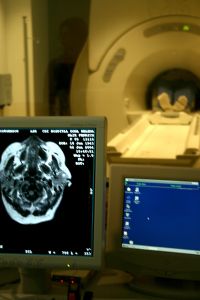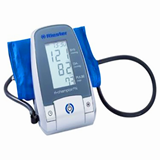The two multi-institutional studies, both published online on the Science Express feature of the journal Science, found:
- Mutations that affect an unexpected tumor-suppressing role of the NOTCH1 gene;
- Infrequent but significant mutations in four suspected cancer-causing genes; and
- frequent mutation of the tumor-suppressing gene p53, which previously was known to be damaged or impaired in head and neck cancer.
"These findings should help us better treat patients by allowing us to take a more personalized approach than is currently possible with this cancer," said Jeffrey Myers, M.D., Ph.D., professor in MD Anderson’s Department of Head and Neck Surgery and co-senior author of one of the papers.
"Long term, we’ll see how patients with these genetic mutations do with our conventional treatments of surgery, radiation, chemotherapy or chemoradiation," Myers said. "This will help us identify groups of patients who need additional or different treatments. Also, some of the newly identified mutations might prove to be potential targets for treatment.
"In the near term, we found mutations that increased expression of PI3K, which is known to be an oncogene in other cancers. There are drugs being studied that target the PI3K pathway, so we might be able to select patients who could benefit from clinical trials of these promising agents," Myers said.
MD Anderson scientists teamed with others from Baylor College of Medicine (BCM) and the Johns Hopkins Kimmel Cancer Center to analyze 32 head and neck tumors. They then validated their findings in another 88 tumor samples. A separate team of researchers from the Broad Institute, Dana-Farber Cancer Institute and the University of Pittsburgh School of Medicine reached the same conclusions based on the analysis of 74 tumors.
About half of head and neck squamous cell cancer patients survive for five years after diagnosis. Disease treatment can disfigure and/or impair breathing, swallowing, speech, taste, hearing or smell. Each year about 50,000 new cases are diagnosed in the United States compared to about 500,000 worldwide.
Prime risk factors for the disease are tobacco and alcohol use, and infection with high-risk subtypes of the human papillomavirus, Myers said. In India, Taiwan and other Asian nations chewing betel or areca nuts also raises the risk of developing oral cancers.
Mutations less common in oncogenes
The researchers found that the tumor-suppressing gene TP53 was mutated in 47 percent of the tumors, by far the most commonly affected gene. So far, attempts to restore normal expression of the p53 protein, and expression of other impaired tumor-suppressors, have largely been unsuccessful.
"However, the finding from an unbiased approach that p53 mutation is the most common genetic abnormality in head and neck tumors indicates that we have to keep working with p53 to determine how it can be best used as a biomarker and/or therapeutic target," Myers said.
Next most common was NOTCH1, which was altered in 15 percent of tumor samples. Previously found to be an oncogene in leukemia, the team’s findings pointed to a tumor-suppressive role for NOTCH1 in head and neck cancer. The researchers are following up to sort out the gene’s role.
"NOTCH1 plays a dual role in biology, maintaining stem cells in some tissues or causing them to terminally differentiate in other tissues. This might explain why it could be an oncogene in one context or a tumor-suppressor in another," said Mitchell Frederick, Ph.D., assistant professor in Head and Neck Surgery and co-lead author of the paper.
Newer, targeted cancer therapies typically aim to shut down expression of oncogenes, mutated or dysregulated genes that fuel cancer growth and survival. PI3K (6 percent of tumors) and HRAS (4 percent) were the most commonly mutated oncogenes identified by the two groups.
The team also found infrequent but significant alterations in the tumor-suppressors CDKN2A (9 percent) and FBXW7 (5 percent).
HPV-driven tumors are genetically simpler
Human papillomavirus (HPV) is a recently recognized risk factor for head and neck cancer. Research has shown that patients with HPV-associated cancer have longer overall and progression-free survival.
The team found a possible explanation for that: HPV-associated cancers had fewer mutations per tumor (4.8 plus or minus 3) compared to tumors not related to the virus (20.6 plus or minus 16.7). And none of the HPV-associated tumors harbored mutations in TP53.
Patients who used tobacco had more than twice the number of mutations per tumor as those who did not.
The researchers conclude that prevention, risk assessment and early detection of head and neck cancer remain the best ways to reduce illness and death from the disease.
Next: A more comprehensive look at genomic activity
Myers said the genetic variation analysis is part of a larger study under way that will include additional genomic aberrations found in the tumors – gene copy number alterations, expression of messenger RNA and microRNA, and the epigenetic silencing of genes by methylation.
"We hope that by integrating these different types of genomic alterations, we can better understand how they work together and how they affect disease progression," said co-lead author Curtis Pickering, Ph.D., a post-doctoral fellow in MD Anderson’s TRIUMPH (Translational Research in Multidisciplinary Programs) program.



-160x160-state_article-rel-cat.jpg)









